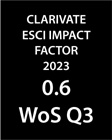The structure of agricultural income inequality and policy challenges: an international comparison
DOI:
https://doi.org/10.17649/TET.39.3.3647Keywords:
magyarAbstract
The article examines agricultural income inequality from an international comparative perspective, highlighting its significant socioeconomic and spatial impacts,particularly affecting rural sustainability and economic stability. Agricultural income disparities result from structural issues such as land ownership patterns, market power dynamics, subsidy schemes, and uneven technological development. The research aims to identify spatial and structural characteristics of agricultural income distribution and evaluates policy interventions' effectiveness.
Methodologically, the study critically reviews various income inequality measurement approaches, including cross-sectional and panel data analyses, Gini coefficients, regression-based decompositions, and dynamic inequality indicators. Each method's advantages, limitations, and applicability are discussed in depth, emphasizing issues like data consistency, endogeneity, and sample attrition. Focusing specifically on the databases used to study agricultural income inequalities, the paper provides an extensive analysis of key databases such as EU-SILC (European Union Statisticson Income and Living Conditions), FADN (Farm Accountancy Data Network), and ARMS (Agricultural Resource Management Survey). These databases, primarily covering Europe and the USA, are valuable due to their methodological consistency, comprehensive data coverage, and long-term availability. However, the analysis recognizes their limitations, including representational biases towards larger, commercially viable farms and the exclusion of informal economic activities prevalent in developing countries. Empirical findings indicate that agricultural subsidies often exacerbate existing inequalities by disproportionately benefiting large-scale farmers, particularly in developed economies like the European Union and the United States. The Common Agricultural Policy (CAP) of the EU, for instance, tends to maintain or even deepen income disparities due to its support mechanisms'regressive nature. In contrast, targeted subsidy programs in developing economies, such as Brazil's Bolsa Família or Malawi's Farm Input Subsidy Program (FISP), demonstrate potential for reducing rural poverty and stabilizing farm incomes.
Downloads
Published
How to Cite
Issue
Section
License
Copyright (c) 2025 Fertő Imre

This work is licensed under a Creative Commons Attribution 4.0 International License.
Authors wishing to publish in the journal accept the terms and conditions detailed in the LICENSING TERMS.






